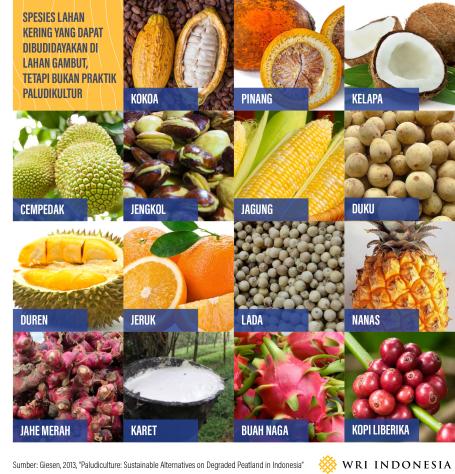Dryland Species That Can Be Cultivated in Peatland, But Are Not Paludiculture Practices

This data visualization is currently only available in Bahasa Indonesia.
Have you heard that liberica coffee, cacao, coconut and rubber are plants that thrive on peatlands? It is true that those plants can be cultivated on peatland. However, not all plants that thrive on peatlands can be considered a part of paludiculture. Why?
There are two species of plant that can grow on peatland. First is the native species of peat swamp and the non-native species that adapt to the wet peatland and thrive.
Liberica coffee, cacao, coconut and rubber are not native to peat swamp and require the peatland to be drained/dried to thrive. Such species is usually planted alongside the construction of square dams with overflow to keep the water level low (40 cm below the peatland surface or more).
The principle of paludiculture is actually the cultivation of plants native to peat swamp on wet or wetted peatlands without drainage. This practice does not only provide economic benefits, but also produce biomass (the biological materials in plants) that will support peat formation in the long run.
Species that require drainage to grow will not survive on fully wetted peatlands. Therefore, plant cultivation with drainage cannot be classified as paludiculture let alone sustainable cultivation. It is merely ‘plant cultivation on peatland’.
